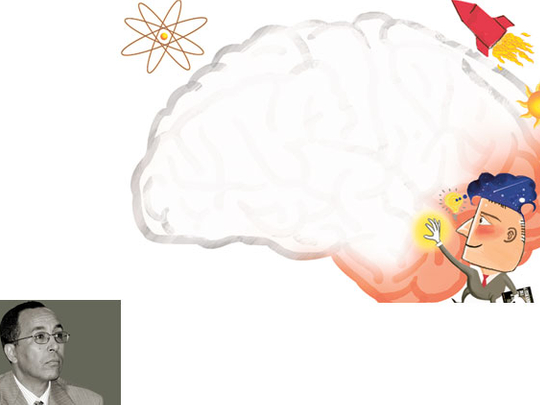
On the first day of my astronomy course, I give students a ‘pre-assessment' quiz for me (and for them) to get a general idea of the knowledge — and misconceptions — they bring in. Questions include: how old are the universe, the sun, and the earth; who was Copernicus; and what is the difference between a planet and a star …
Few students are able to answer these questions correctly.
What I don't tell my students is that a famous documentary once asked Harvard students on the day of their graduation why it is hotter in the summer than in the winter (in the northern hemisphere), and fewer than 10 per cent of them answered correctly.
Similarly, at George Mason University, half of the seniors surveyed could not state the difference between an atom and a molecule. Such ignorance is much more widespread among the general public, as half of the (surveyed) American public does not know how long it takes the earth to orbit the sun, and one in five thinks the sun goes around the earth!
In recent studies, only about 7 per cent of American adults were judged to be ‘scientifically literate'. Science literacy is the general understanding of scientific ideas (facts, terms, theories); it allows a reasonably educated person to digest scientific information that is received from various media; it also allows one to follow the discussion on a science-related topic (say stem cell research) and come to an informed conclusion.
It is important to stress that such literacy is broad and does not depend on one's scientific training. Indeed, studies (in the West) have shown that many scientists who possess high but narrow expertise in their fields do not have enough general and broad knowledge in other areas. (How many non-biologists know the difference between genes and chromosomes?)
Why is this type of literacy important?
A person reading the newspaper today or watching the news on television cannot avoid discussions and controversies over such topics as: greenhouse gases, ozone layer depletion, and acid rain; cloning, stem cell research, and genetic engineering; nuclear energy; etc.
These issues have become part of the political debates, and voting citizens need to have some understanding of them when choosing a candidate or supporting or opposing a proposed law. Indeed, whether global warming (or climate change) is due to human production of greenhouse gases is a hotly debated issue among US politicians these days.
Moreover, ignorance of the difference between bacteria and viruses not only makes a significant difference in terms of health care and the consumption of medicines, but also affects the proliferation of antibiotic-resistant bacteria. Science literacy is also not the same as technological literacy (familiarity with various technologies) or digital literacy (ability to easily utilise and assess digital information).
This issue has unfortunately only been studied (at some length and for some time) in the West. I am not aware of any surveys or serious studies of it in our part of the world. Internationally, a study was conducted in 2006 in the US and 32 European countries. At the top came Sweden, where 35 per cent of adults were deemed scientifically literate, followed by the US, with a score of 28 per cent. At the very bottom was Turkey (which was included as a European country), with only 2 per cent of adults achieving the required standard!
The situation in the US is quite instructive, because it has been studied for many years and in different population samples, and experts have been able to draw some useful conclusions. They have found that while the general public in the US is not very scientifically literate (not at international standards), Americans who have gone to college and majored in any field end up acquiring significant science literacy.
This is because contrary to most other higher education systems, American universities require all students (even those majoring in arts or humanities) to take and pass 1 to 3 science courses.
Another important remark is the realisation that Americans go to museums, zoos, and aquariums quite frequently; indeed, 30 per cent of US residents visit a museum in a given year, compared to 16 per cent of Europeans and 14 per cent of the Japanese; 58 per cent of Americans visit a zoo or an aquarium each year, compared to 9 per cent of Europeans and 32 per cent of the Japanese.
The need for science literacy is becoming clear and urgent. And the need for a broad scientific education of the public, through courses, articles, TV shows, webpages, web videos, blogs, museums, planetariums, and other channels, is critical.
Educators, media people, and social actors must seize upon this issue and play a constructive role in it.
Nidhal Guessoum heads the physics department at the American University of Sharjah.









